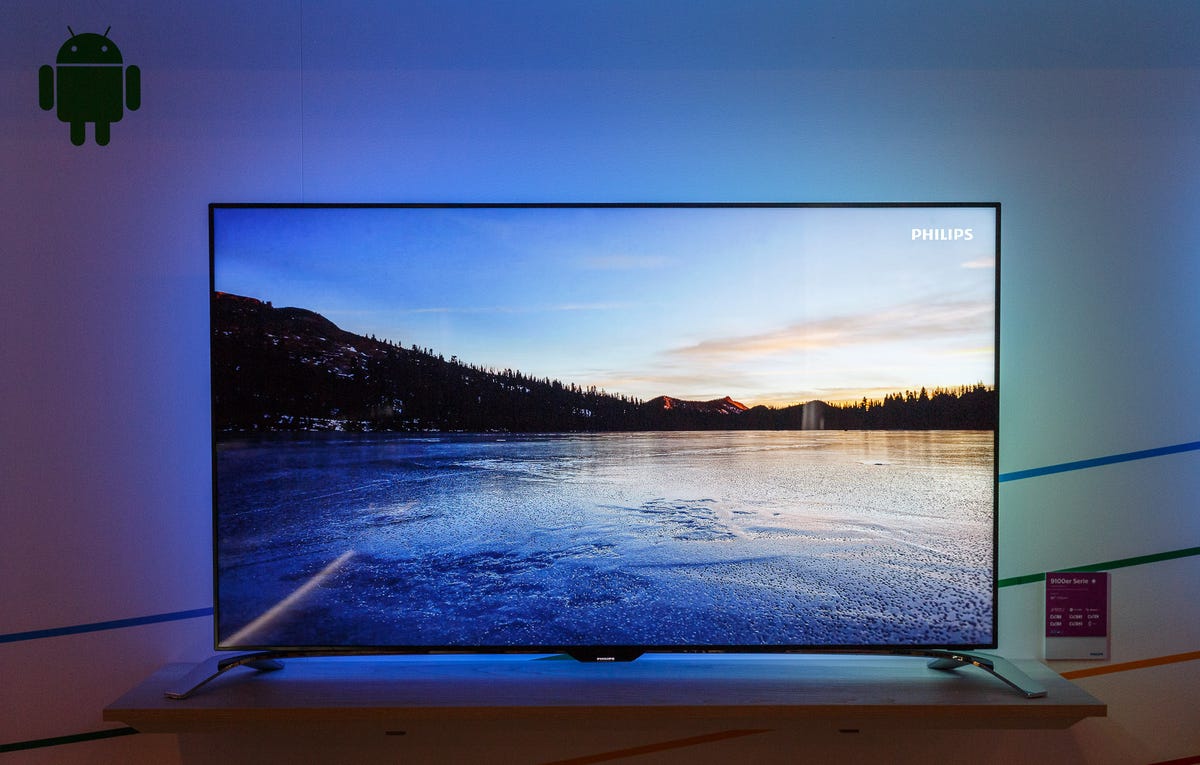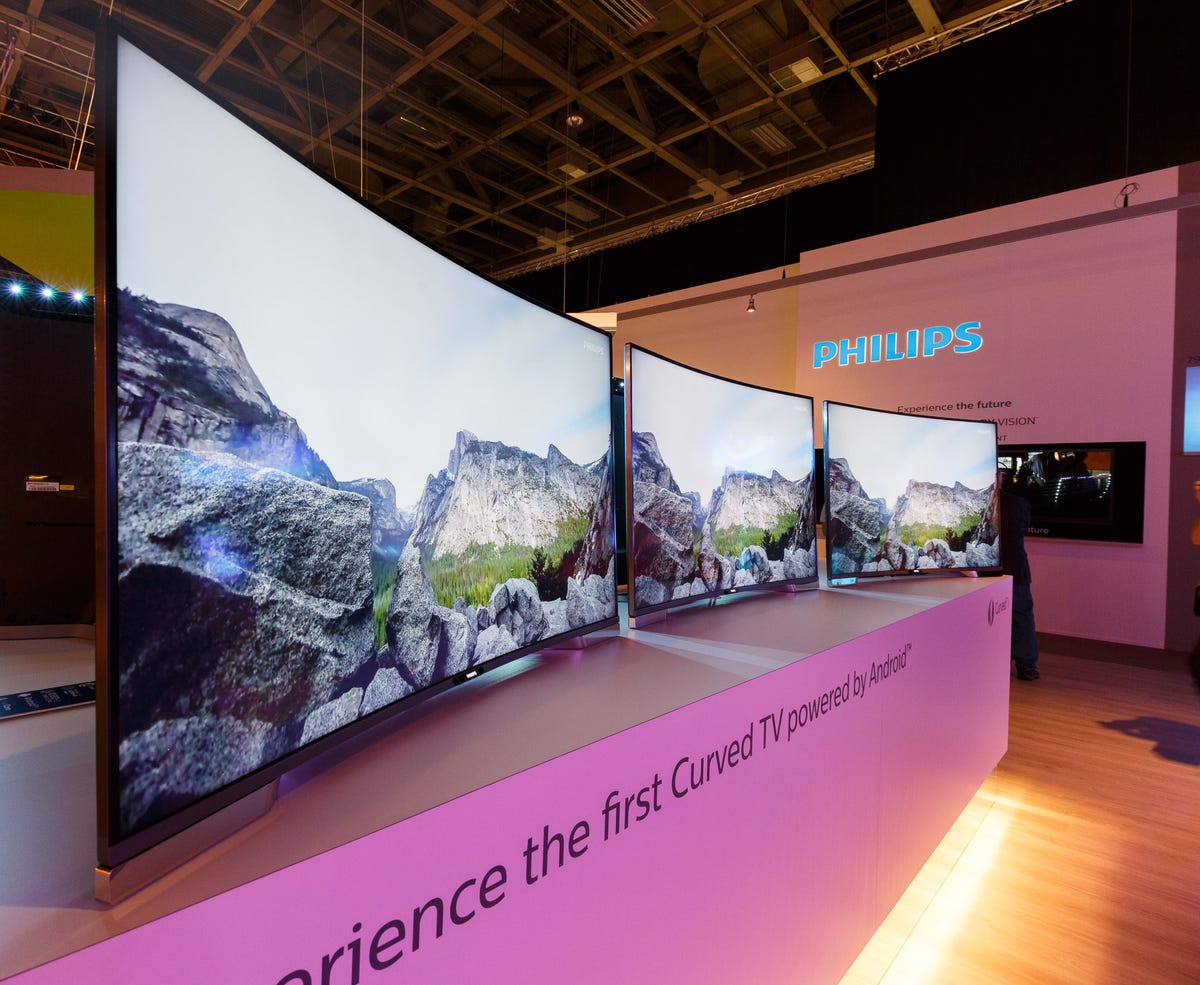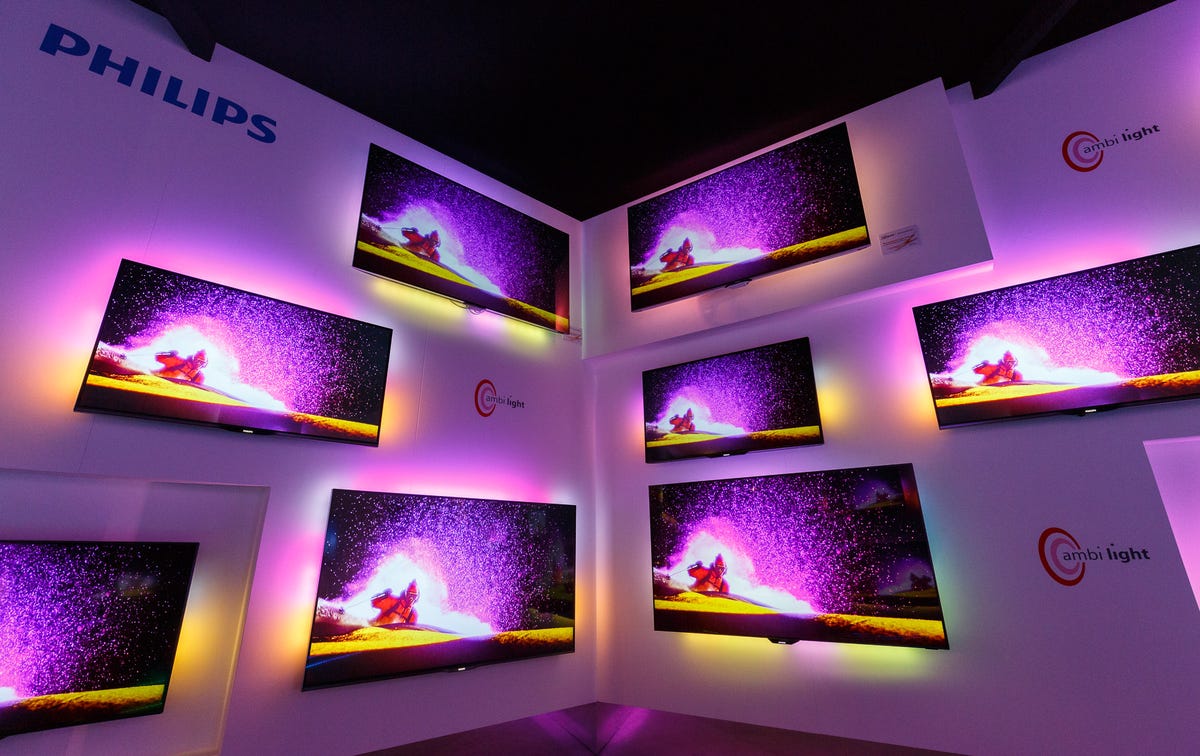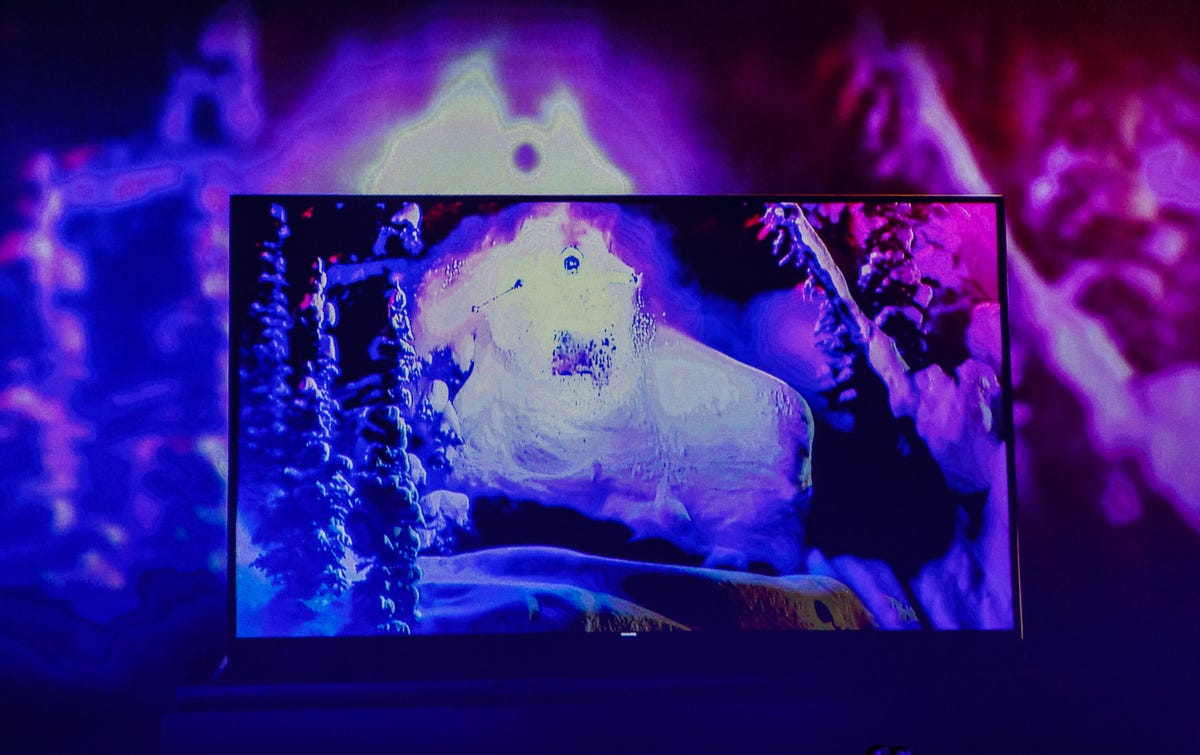
Stephen Shankland/CNET
BERLIN — Trying to stand out in a crowded market, TP Vision announced three models of Android-powered 4K TVs, the lower-end Philips 7900, the curved Philips 8900, and the high-end Philips 9100.
The products all have screens with 3,840×2,160 resolution — aka 4K, Ultra HD, or UHD — which is the main thrust of TV makers’ efforts today to encourage flat-panel owners to spring for new models. They also support 3D TV — which carried the upgrade banner without much success in exciting customers.
Philips now has 4K TVs “for everybody’s taste and budget,” said TP Vision Chief Commercial Officer Nico Vernieuwe at a press conference here at the IFA electronics show Thursday — though the company didn’t actually reveal any pricing except that the 55-inch 9109 costs €2,600. The new models all go on sale this month in Europe and Russia.
4K resolution is common in the TV industry, if not people’s homes, but less common today is support for Google’s Android operating system. The three Philips models run Android 4.2.2 Jelly Bean.
IFA 2014 coverage
- Samsung bets big on curved TV, shows off 105-inch UHD bendable model
- Panasonic plasma-ifies 4K LCD TV picture with full-array local dimming
- IFA 2014: CNET’s complete coverage
“For the first time this brings smartphone speed and ease of use to the smart TV,” Vernieuwe said. “We are convinced that by bringing this to market, we will bring the smart TV to the next level.”
Smart TVs, broadly speaking, add apps and other capabilities to TVs beyond just watching video. That can mean things like weather reports, games, and social networking. So far, the biggest hits have simply been apps that connect to streaming-video services, though.
The Philips TVs have Google certification, which means they can run TV-oriented Android apps in the Google Play store. That category is slim pickings compared to the wealth of smartphone and tablet apps where Android is most common today, but TP Vision hopes to see that change as Android TVs spread. “Developers…have suddenly a new wealth of things to develop for the big screen,” Vernieuwe said.


Stephen Shankland/CNET
The new Philips TVs include apps for YouTube, Spotify, Facebook, Netflix, and Dropbox. Other built-in Google apps include search and voice search, Google Play movies and music for purchasing content, and the Chrome browser.
The company already announced two other Android-powered 4K TVs, the Philips 8800 and 9800, both with flat-panel screens, but the new models expand the range to more cost-sensitive customers.
Another distinguishing feature is Philips Ambilight, a row of LEDs on the back of the TV that illuminate the wall behind the TV with colors matched to the TV’s image. “This is really bringing moods and activities into your home in connection with your lighting,” Vernieuwe said. Ambilight can also be tuned to the colors of a favorite sports teams, with brightness and color intensifying when people in the room get loud cheering for a goal. Ambilight LEDs are on two sides of the 7900, three sides on the 8900, and all four sides on the 9100.


Stephen Shankland/CNET
Today’s Ambilight technology “is just the beginning,” he added. In a promotional video called “Afterglow,” TP Vision showed off what appears to be coming next with Ambilight: a soft-focus version of the actual image, not just its colors.
The Philips 9100 comes in 55-inch and 65-inch models; the 8900 in a 55-inch model; and the 799 in 49-inch and 55-inch models.
Philips also announced a €249 streaming-media set-top box, the UHD 880, that will ship in the first quarter of 2015. It’ll provide UHD content to Philips TVs built in 2013 and 2014 and can decode video encoded with the HEVC. The High Efficiency Video Coding codec, also called H.265, is the the industry’s successor to the widely used H.264/AVC codec that dominates today’s video. HEVC offers higher quality for a given amount of network capacity, making 4K video more feasible. The UHD 880 will run Android L, the next version of Google’s operating system.
The UHD 880 will be given free to new customers of 8000- and 9000-series Philips TVs, the company said.
The device functions as a sort of hardware patch because the company couldn’t include HEVC support directly in the TVs themselves; HEVC wasn’t yet finished when they were designed, the company said in a statement. Although the TVs themselves already offer many of the features people might buy a streaming-media device for, there’s still a reason customers might be interested in the UHD 880. For one thing, people with TVs from other manufacturers might be interested in the device. For another, it has the “potential to offer more later due to Android L.”
Philips in 2012 set up TP Vision as a joint venture with Hong Kong-based TPV Technology. In 2014, it sold its stake in the business to TPV, but the Philips brand remains on the products.


Stephen Shankland/CNET
Update, 12:37 p.m. PT: Adds details on the UHD 880 and pricing for the Philips 9109 model.




